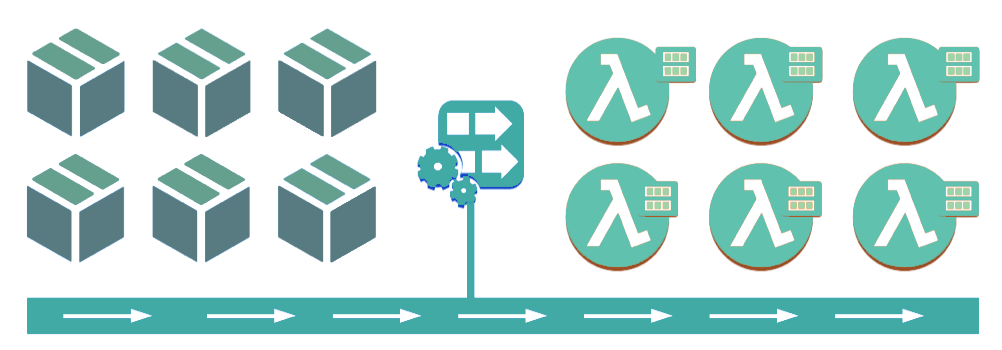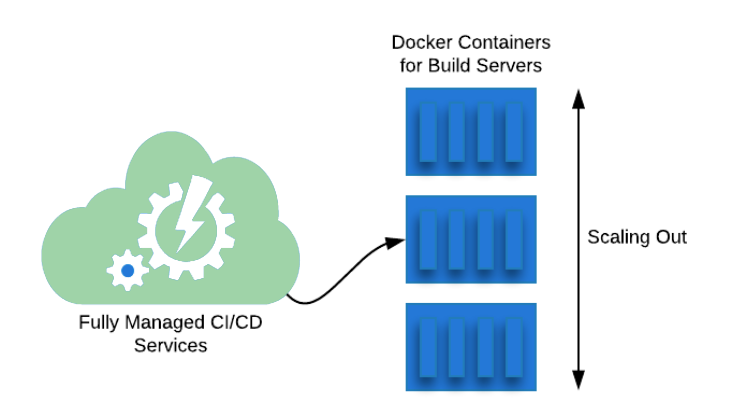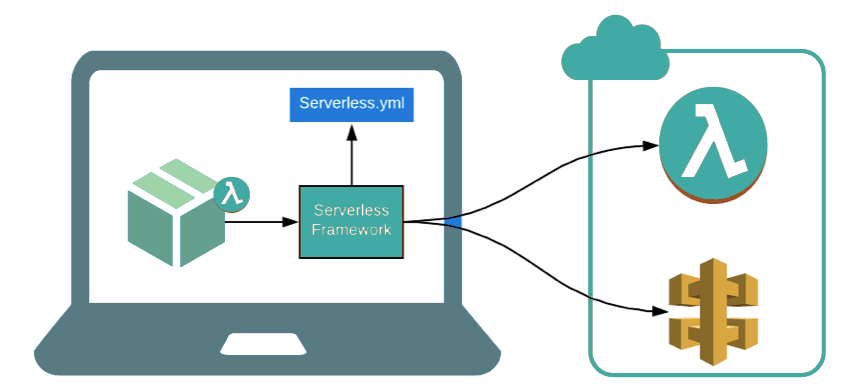This post on Serverless is from guest author Limor Wainstein, email is [email protected].
During the past decade, both DevOps and serverless have become quite popular for software development. These not only challenged the way software is being developed but also affected the entire software development lifecycle. First of all, let’s try to understand serverless and DevOps are.

Serverless and DevOps
Serverless is commonly used in conjunction with terms such as architecture, computer, and services. In brief, serverless architecture refers to the solution architecture of software applications built using fully managed third-party services (serverless services) as core dependencies. At its core, serverless computing provides runtimes to execute code, which is also known as function as a service (FaaS) platforms.
DevOps is a collection of practices and tools that increase the ability to deliver (build, test and deploy) applications and services more efficiently. DevOps requires more automation and eliminating overhead in setting up the infrastructure as well as in the build and deployment of code. DevOps does not only affect the technology; DevOps is also targeted at people and team structures.
Continuous Integration (CI) and Continuous Delivery (CD) tools are used to build, test and deploy code and are often done using build automation Tools that provide fast resolution of errors and bugs are equally crucial.
In addition to using FaaS, fully-managed Docker containers as a service are also evolving. For example, technologies such as AWS Fargate allow to run these Docker containers and scale them without needing to provision and manage any underlying infrastructure. This is useful for DevOps since the containers can also be used to build, test and deploy applications.
Fully Managed DevOps Services
Fully managed DevOps services are beginning to emerge for CI and CD where these services are offered in software as a service (SaaS) models, or hosted services like Travis, Circle CI where the respective third-party service providers manage the underlying infrastructure and services. These services could range from semi-managed to fully managed serverless services that are used for the core of DevOps.
 Docker containers underly many of these managed services, and these containers are used to allow isolated and customized build environments. Some services such as AWS Code Build enable defining the Docker image together with the required libraries and tools. This allows direct execution of the build job without needing to reinstall for each build. Various orchestration tools are used by these managed services, such as Kubernetes, Docker Swarm, AWS ECS, to control the fleets of containers.
Docker containers underly many of these managed services, and these containers are used to allow isolated and customized build environments. Some services such as AWS Code Build enable defining the Docker image together with the required libraries and tools. This allows direct execution of the build job without needing to reinstall for each build. Various orchestration tools are used by these managed services, such as Kubernetes, Docker Swarm, AWS ECS, to control the fleets of containers.
DevOps Tools with Serverless.
There is also a tendency towards implementing DevOps using serverless architectures. The ability to implement unique and efficient CI/CD tailored to the application requirements, consumption-based cost models, supportive services (e.g., AWS Code Build, AWS Code Pipeline, etc.) create attraction towards this approach. By using serverless services, it is possible to implement an entire build, test and deploy pipeline by writing the glue code using serverless services, without using any hosted solutions.
Open Source and Serverless
Over the past few years, many open source DevOps tools started emerging. One of the most popular open source DevOps tools is the Serverless Framework.
 The Serverless Framework allows simplification by:
The Serverless Framework allows simplification by:
- Declaring the microservices infrastructure, endpoints and mapping it with execution logic (for example, with a Lambda function).
- Building artifacts, archiving and deploying to infrastructure.
- Extending DevOps capabilities using plugins.
Cloud providers are also beginning to develop similar tools. For example, AWS recently introduced its AWS Serverless Application Model (SAM) which could potentially replace the Serverless Framework functionality when it comes to declaring the serverless APIs. Contributions by the open source community do keep the Serverless Framework supporting newly-introduced AWS services as they appear.
In addition, open source security is becoming a challenge when using third-party libraries. On the other hand, vulnerability scanning is also becoming a commodity, especially with the introduction of the NPM scanning process. This has helped to reduce the development risks in building applications.
Infrastructure as Code
With the adoption of serverless architectures, infrastructure provisioning has become a significant part of the deployment process. Applications are using different serverless services as building blocks, so it is crucial to be sure that these services are correctly configured and connected. One of the best practices is to define the infrastructure in the code using declarative tools and languages like Terraform. This enables versioning of the infrastructure along with the code thus reducing the manual work on the DevOps process.
Immutable Infrastructure
Another effect of serverless for software application development is how we look at the serverless services modifications. It is often possible to provision new instances of serverless services while keeping the existing instances running. This means you can deploy new instances of serverless services and switch to the more recent version upon success. Serverless has made Blue-Green and Canary deployments both more practical and affordable for various applications.
Distributed DevOps
Using serverless technologies for application development means that DevOps has to deal with distributed systems. While it’s possible to use different serverless services from different providers, configuring a CI/CD pipeline involves coordinating these operations. This adds further complexity to the DevOps processes. It is important to implement more visibility into each serverless service with detailed monitoring when these services are provisioned once a change had been made.
Summary
Overall, we’ve outlined a few ways in which serverless is changing DevOps practices used for software development. To wrap up, let’s look at several best practices for serverless and DevOps.
- Implement automation for CI/CD.
- When implementing tests such as code style, unit tests, integration tests, UI tests, make them a part of development routine checks.
- Upon committing the code, try to run the code style checking using git lifecycle hooks if possible.
- Automate as needed to support building the artifacts, running all the test cases and send the results back to Pull Request using a CI tool.
- Rerun the tests before deployments, preferably through an appropriate deployment trigger.
- Include the infrastructure in the code.
- Use managed services for CI/CD whenever possible to reduce the overhead of infrastructure management.
- Design an application for rollback support for both previous versions and database migrations.
- If it’s a database change, create scripts that can both apply and revert the changes.
- Create version and store deployments in a durable place.
- Allow deploying specific versions of application deployment.
- Choose tools that help streamline the debug and monitoring cycle.
Separating the deployment cycles of serverless projects allows teams to make changes without redeploying the entire application. It remains vital to learn and understand the changes introduced by DevOps and serverless process and technologies and to adapt accordingly so that the DevOps processes are aligned to support serverless applications.



